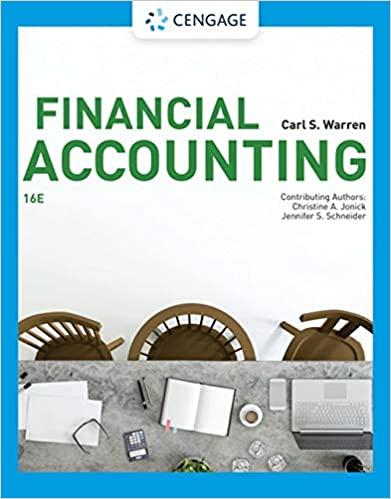Question
1.Which profit margin measures the overall operating efficiency of the firm? A.Gross profit margin B.Return on equity C.Net profit margin D.Operating profit margin 2.Tools, Inc.
1.Which profit margin measures the overall operating efficiency of the firm?
A.Gross profit margin
B.Return on equity
C.Net profit margin
D.Operating profit margin
2.Tools, Inc. is a retailer of power tools.The firm's current assets are cash, accounts receivable, and inventory and its current liabilities are accounts payable and accrued wages.Which short-term liquidity ratio would have the highest calculated value?
A.Quick ratio
B.Cash ratio
C.Current ratio
D.Debt-to-total capital
3. Which of the following is NOT correct?
A.Enterprise value + net debt = equity value.
B.Operating assets are usually all assets except for cash and investment assets.
C.Operating liabilities are usually all liabilities except for debt and debt-like liabilities.
D.Rather than treating cash as an operating asset, it is netted against debt to get net debt.
4.The Change in Working Capital on the Cash Flow Statement should include Current Assets and Current Liabilities, excluding cash and debt, according to the definition of Working Capital. Why would you include changes in BOTH Current AND Long-Term Deferred Revenue in this section? After all, Long-Term Deferred Revenue is not a Current Asset.
A.This is not correct - Long-Term Deferred Revenue should be counted in Cash Flow from Financing instead, because it's a long-term liability.
B.In order to simplify the statements and save time, but it should really be counted elsewhere.
C.Because Long-Term Deferred Revenue is related to a company's core business operations, just like everything else in Cash Flow from Operations, so it belongs there.
D. you should consolidate both the Deferred Revenue line items into a single item on the balance sheet instead.
5. When calculating a company's cost of capital, you find that the company has Preferred Stock. Should Preferred Stock be treated like equity (no tax effect) or debt (multiplied by (1 - Tax Rate)) in the WACC calculation?
A.It should be treated like debt, just like it is in the Enterprise Value calculation, because Preferred Stock has required dividends just like Debt has required interest payments.
B.It should be treated like debt because Preferred Stock is above common stock in the capital structure "hierarchy."
C.It should be treated like equity because Preferred Stock Dividends are not tax-deductible.
D.It depends on whether you are calculating Levered FCF or Unlevered FCF.
6.Which is not true when preparing the Statement of Cash Flows section of the forecasted model?
A.Depreciation, amortization and share-based compensation expense will be added back to net income to determine cash flows from operating activities.
B.Increases in operating assets and decreases in operating liabilities will be treated as cash outflows to determine cash flows from operating activities.
C.Non-operating gains from sales of equipment or investments will be subtracted from net income to determine cash flows from operating activities.
D.Increases in operating assets and increases in operating liabilities will be treated as cash outflows to determine cash flows from operating activities.
7. If the Tripoli Company has a current ratio of 2:1, which of the following activities would increase the company's current ratio?
A.Paying long-term debt.
B.Cash payment reducing accounts payable.
C.Collecting accounts receivable and placing the funds in a checking account.
D.Declaring a cash dividend payable next period.
8. The WACC includes the cost of equity, cost of debt and cost of preferred stock.
True
False
Step by Step Solution
There are 3 Steps involved in it
Step: 1

Get Instant Access to Expert-Tailored Solutions
See step-by-step solutions with expert insights and AI powered tools for academic success
Step: 2

Step: 3

Ace Your Homework with AI
Get the answers you need in no time with our AI-driven, step-by-step assistance
Get Started


